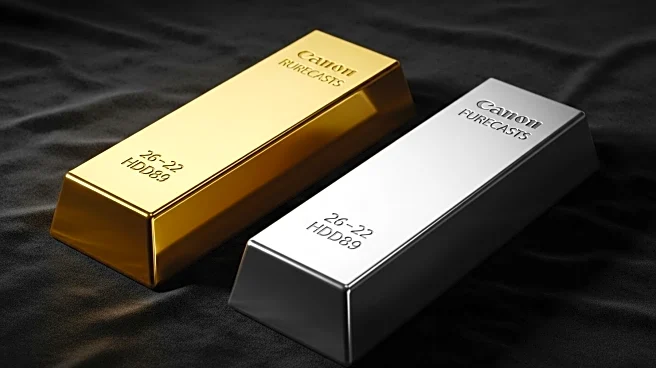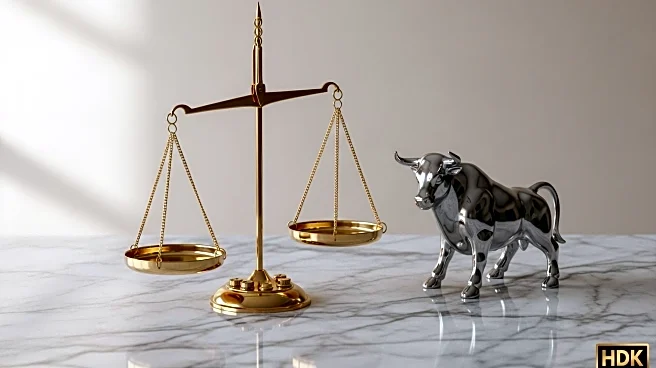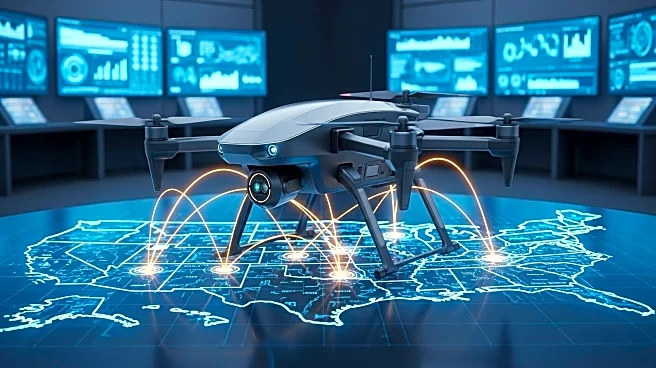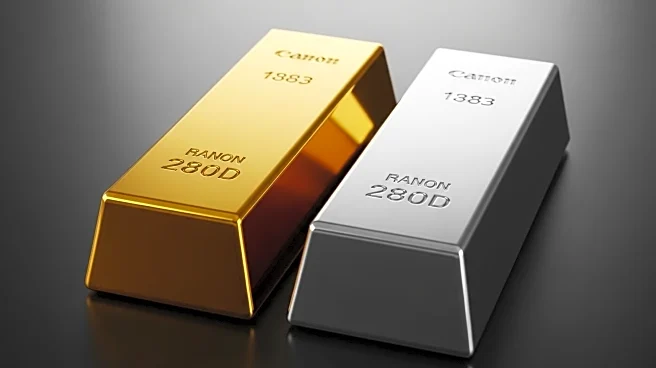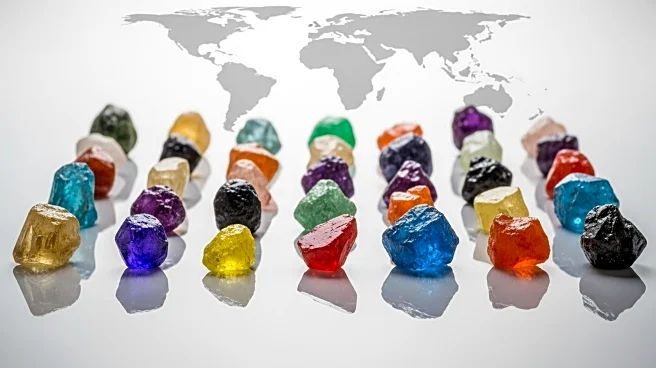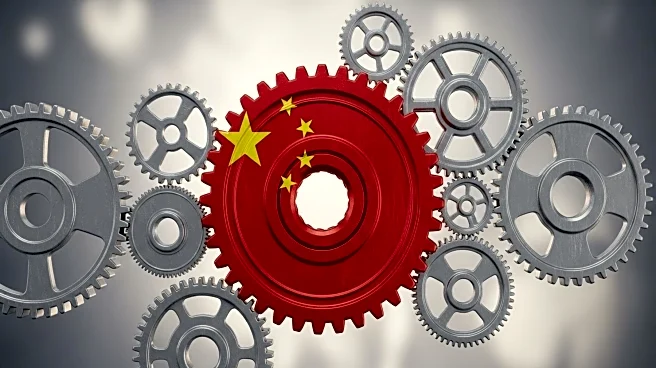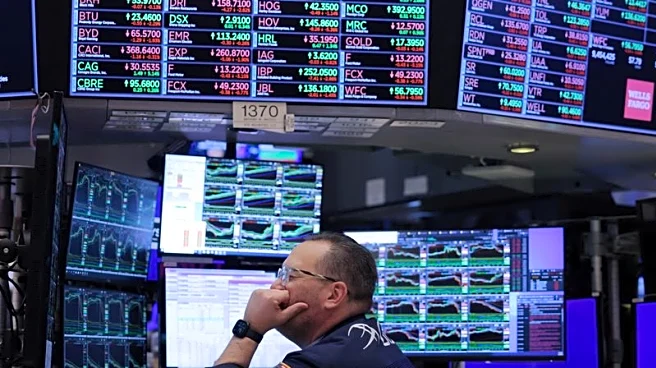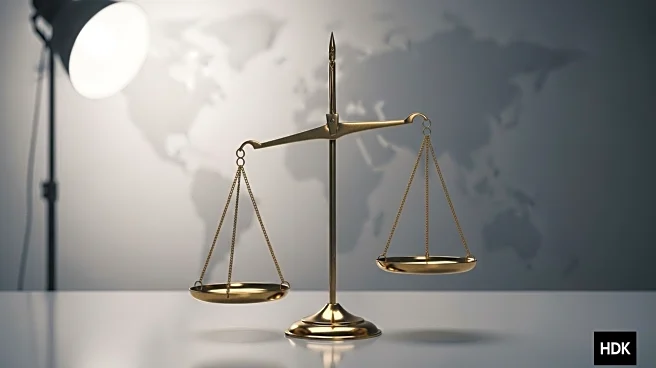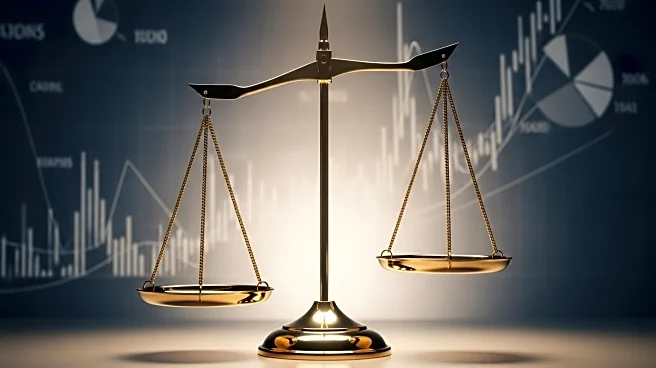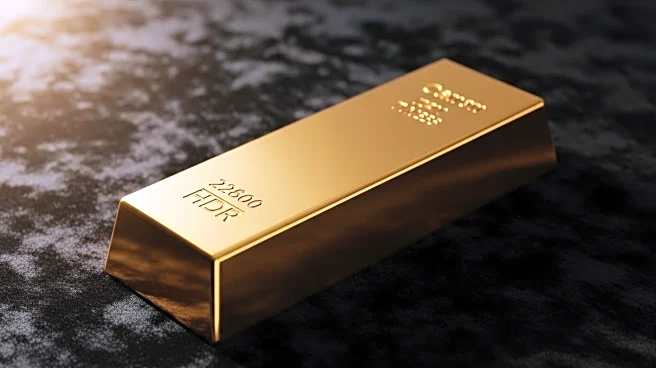What's Happening?
Gold and silver prices have reached new highs, driven by geopolitical tensions and economic uncertainties. President Trump's recent threat of imposing 100% reciprocal tariffs on China has contributed to the rally, although he later moderated his stance. This uncertainty has led to significant price movements in precious metals. Gold has set new records 15 times since September, with a notable $94.50 increase on Monday, closing at $4,130. Bank of America has revised its 2026 gold forecast to a peak of $5,000 per ounce, with a mean estimate of $4,400. Silver has also seen substantial gains, with futures closing at $50.7, marking the first new record since 2011. The bank projects silver could reach $65 per ounce by 2026.
Why It's Important?
The surge in gold and silver prices reflects broader economic and geopolitical uncertainties impacting global markets. Precious metals are often seen as safe-haven assets during times of instability, and their rising prices indicate investor concerns over potential trade conflicts and economic downturns. The revised forecasts by Bank of America suggest continued bullish sentiment in the precious metals market, which could influence investment strategies and portfolio allocations. Industries reliant on these metals, such as electronics and jewelry, may face increased costs, affecting pricing and profitability. Additionally, the rally could impact monetary policy decisions as central banks monitor inflationary pressures linked to commodity prices.
What's Next?
The ongoing geopolitical tensions and economic uncertainties suggest that gold and silver prices may continue to experience volatility. Investors and analysts will closely watch developments in U.S.-China trade relations and any further policy announcements from President Trump. The potential for short-term pullbacks remains, as indicated by Bank of America, but the long-term outlook appears bullish. Market participants may adjust their strategies based on these forecasts, potentially increasing allocations to precious metals. Central banks and policymakers will need to consider the implications of rising commodity prices on inflation and economic growth, which could influence interest rate decisions and fiscal policies.
Beyond the Headlines
The rally in precious metals highlights the complex interplay between geopolitical events and financial markets. The threat of tariffs and trade conflicts underscores the vulnerability of global supply chains and the potential for economic disruptions. This situation raises ethical considerations regarding trade policies and their impact on international relations and economic stability. The long-term shift towards precious metals as safe-haven assets may also reflect broader concerns about the sustainability of current economic models and the need for diversification in investment portfolios.
